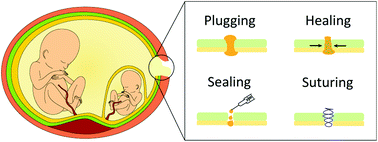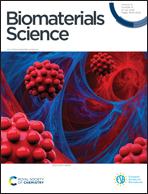Biomaterial-based treatments for the prevention of preterm birth after iatrogenic rupture of the fetal membranes
Abstract
Minimally invasive interventions to ameliorate or correct fetal abnormalities are becoming a clinical reality. However, the iatrogenic preterm prelabor rupture of the fetal membranes (FMs) (iPPROM), which may result in preterm birth, remains a main complication. Despite the cause of iPPROM not being fully known, the puncture created by the fetoscope remains unhealed until the end of the pregnancy, which permits chorioamniotic separation and amniotic fluid leakage. Hence, there is an urgent need to develop strategies to treat the FMs after minimally invasive interventions. However, none of the previously tested strategies has been clinically translated. Here, we review the current knowledge about the FMs starting from their development and present the different models that have been developed both in vitro and ex vivo. We also systematically review and summarize the different approaches that have been investigated to plug, seal, heal or suture the FMs both in preclinical and clinical studies and discuss their limitations, outcomes, and future directions.



 Please wait while we load your content...
Please wait while we load your content...